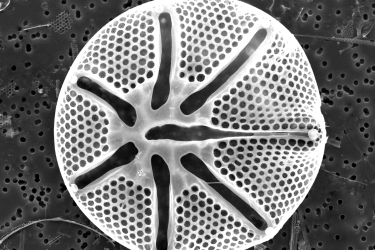Before starting the survey, we need to calibrate our acoustic echosounders, which involves putting a small metal sphere (39 mm) of known sound scattering properties under the ship. In addition to checking the general functionality of the equipment, we also precisely adjust the settings of the echosounders so our systems match the expected values from the target metal sphere. We move the sphere around under the ship to map the conical sound beam using a system of downriggers with monofilament line.

Figure 1. Calibration set-up, showing monofilament line from downriggers and calibration sphere. From ICES Cooperative Research Report on Calibration of Acoustic Instruments, Demer et. al 2015.
Our drifting calibration off Newport on June 13 was not a success due to wind and current conditions, so we are anchored in Monterey Bay on June 16 for another attempt at a calibration.
Success!
The main frequency we use for stock assessment (38 kHz) looks great, although significant fish/jellyfish presence during the calibration may result in lower precision on the higher frequencies.

Steve de Blois at the starboard forward downrigger during calibration. Photo: Rebecca Thomas

